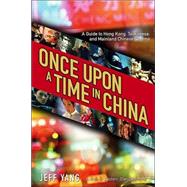
| Contents | |
| Preface | |
| The Dawn of Chinese Film: 1896-1949 Chinese Opera The ShowmanHello, Hong KongShanghai TriadLianhua and the Golden AgeUndercurrents of UnrestDodging the Bullet Between World War and Civil War | |
| Swordsmen and Revolutionaries: The Fifties and SixtiesLowering the Bamboo Curtain "Orphan Island" ReduxHong Kong Steps into the Spotlight | |
| Showdown in Hong KongClash of the Titans A Tale of Two Tongues: Mandarin vs. Cantonese | |
| Martial Arts and Melodrama: The SeventiesWuxia Rising: The Swords Come Out | |
| Fists Break Blades: Dawn of the Kung Fu Era | |
| Enter (and Exit) the Dragon The Golden Guys Michael Hui and the Canto-Renaissance | |
| Lins and Chins: Taiwan's Cinematic Royalty | |
| New Wave Dreams and Ballistic Kisses: The Eighties Jin Yong Chinese Ghost Stories | |
| TVB Takes Flight | |
| Taiwan Tumbles Drinks at Edward's The Gunslinger Making the Fifth | |
| Supercops: The Good, the Bad, and the Brutal | |
| The Best of Times, the Worst of Times: The Nineties The Shaolin Temple | |
| Dirty Deeds Done Dirt Cheap | |
| Category III Erotica | |
| Mob Rule | |
| Real-Life Triads | |
| Counting Down Power to the Sixth Neon Gods, Peach Blossoms, and Wedding Banquets Good, Bad, and Ugly | |
| Piracy Disturbing Horror | |
| Master Wong vs. Master Wong | |
| Ripoffs | |
| Epilogue: 2000 and Beyond | |
| Capsule Reviews | |
| The Dawn of Chinese Film: 1896-1949 Swordsmen and Revolutionaries: The Fifties and Sixties Martial Arts and Melodrama: The Seventies New Wave Dreams and Ballistic Kisses: The Eighties The Best of Times, the Worst of Times: The Nineties Epilogue: 2000 and Beyond Appendices: Frequently Asked Questions and Additional Information | |
| Notes | |
| Acknowledgments | |
| About the Contributors | |
| Index | |
| Table of Contents provided by Publisher. All Rights Reserved. |
The New copy of this book will include any supplemental materials advertised. Please check the title of the book to determine if it should include any access cards, study guides, lab manuals, CDs, etc.
The Used, Rental and eBook copies of this book are not guaranteed to include any supplemental materials. Typically, only the book itself is included. This is true even if the title states it includes any access cards, study guides, lab manuals, CDs, etc.